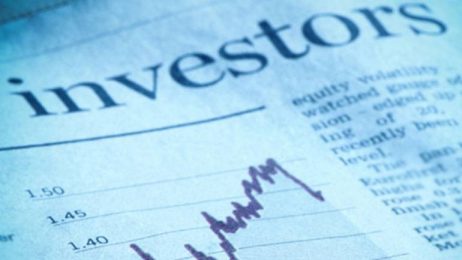Study Shows Investors Make Poor Selling Decisions

While it’s well known that individual investors struggle with selling, even professional fund managers significantly underperform random selections.
Whenever we make our own investment decisions, it’s well known that the biggest issue we face is deciding not when to buy something but when to sell it. Individual investors in particular are prone to making bad decisions when it comes to deciding when to get out of their positions, mostly due to being driven by emotions such as fear rather than the cold analysis that these decisions require.
We might expect professional fund managers to do a lot better, or at least to beat a completely blind approach. After all, these managers are presumably hired and kept on based upon their abilities, and are provided with vast resources to help them arrive at their buying and selling decisions.
New research has emerged that may help explain why so many funds underperform the market. While we would think that leveraging all their management expertise would generally do the opposite, outperform the market in other words, and this is what we pay the extra management fees for, in most cases we fail to see this happen.
In a recently released paper, Selling Fast and Buying Slow, Heuristics and Trading Performance of Institutional Investors, co-authored by Klakow Akepanidtaworn of the University of Chicago, Rick Di Mascio of Inalytics, Alex Imas of Carnegie Mellon University, and Lawrence Schmidt of MIT, institutional investors were shown to do pretty well compared to random with buying decisions, but did far worse when deciding to sell.
Looking at how professional money managers struggle with this
The study consisted of examining the investing results of 783 institutional investors with $573 million of assets under management, compiled over a period between 2000 and 2016. While this may not be a statistically significant sample of all institutional investors, as this is confined to some rather small players in an industry which measures things in billions of dollars, its insights may still have a lot of validity overall.
The paper suggests that investors do not put in the same quality of analysis into their exits as they do with their entries.
When we choose to enter an investment, we have no real stake yet, and we are free to analyze the prospects of investments without any real attachment. When it comes to deciding between holding an investment or selling it, we do indeed have an attachment of sorts, and we could even say that we are personally invested in it, where the outcome of the investment reflects upon us personally.
Investors, including institutional investors, tend to see the story being told once the investment is concluded, when both a buy and sell order has been entered. We might be behind with something or see it underperform, and while this may be a concern, we measure ourselves more by how the investment pans out in the end.
There are all sorts of emotions that may emerge to influence us along the way. When we enter a position, we are driven a lot by hope, which can have us being too enthusiastic, but this is pretty benign compared to the emotions that drive us to either hold it or sell it.
We may view selling at a loss as failure, and while we may have been responsible to some degree for it, we may take this too personally, leading us to hang on to positions longer than we should. We may also, of course, exit positions at the wrong time, due to being overly concerned with the threat of losing more.
Institutional investors may be less fickle than individual ones, but they are still subject to allowing their thinking to deviate from the actual performance and outlook of an investment, which this study shows.
We need to let the stocks tell us when to sell them
The main thrust of this paper is to point out that institutional investors tend to base their buying decisions on performance well enough, to the extent that, all other things being equal, we would expect them to outperform the market. However, when it comes to exiting positions, these investors did not demonstrate the same faithfulness to performance, and were seen to not make the proper distinction between investments that have performed well and those that have not.
In fact, the better performing investments were shown to be more likely to be sold than poorer performing ones. This may seem counterintuitive, but the idea here seems to be to just take profits and not focus enough on what really matters, the future expectation of the investment.
It might be harder from a psychological perspective to lose money already made so to speak, so this may not be as unusual as it may first seem. Unless we confine ourselves to the performance of an investment itself though, whatever other concerns that may influence our decisions are bound to just mess things up.
It seems, then, that these investors are probably too concerned with booking profits than losses, and booking profits does make us look good, but we cannot let this influence our investment decisions, and we must let the performance decide, not our ego.
When our egos show their ugly faces in our investment decisions, this will have us selling the good positions too soon and hanging on to the bad ones longer than we should. It is not easy to take a disinterested view of our investments, but to be successful, it is necessary.
While the paper’s conclusion that we would be better off selling randomly than actively deciding may seem valid enough for these investors, if we can ultimately focus on what is important here, and give selling decisions the same attention as buying ones, we will then put ourselves in a position to beat random exits and get it right on both sides of the trade.

